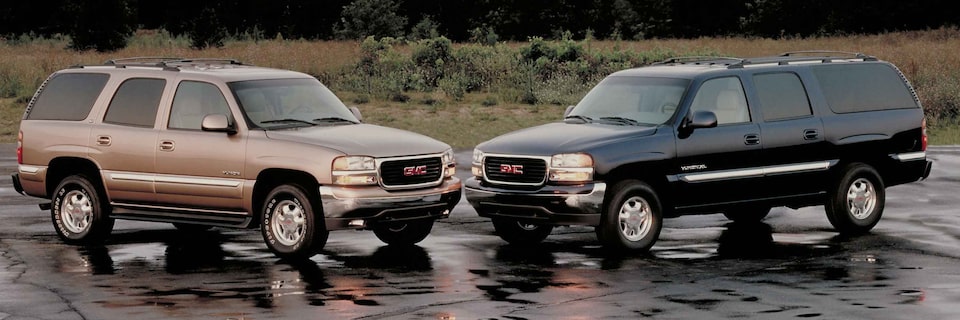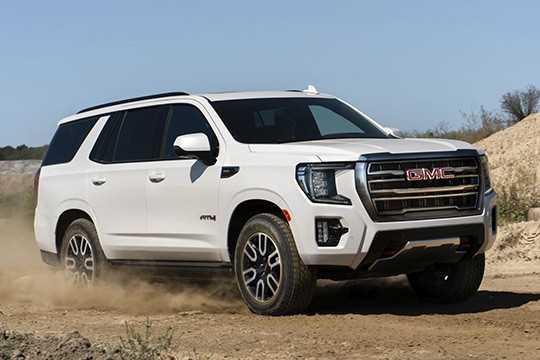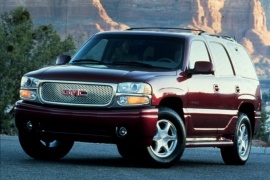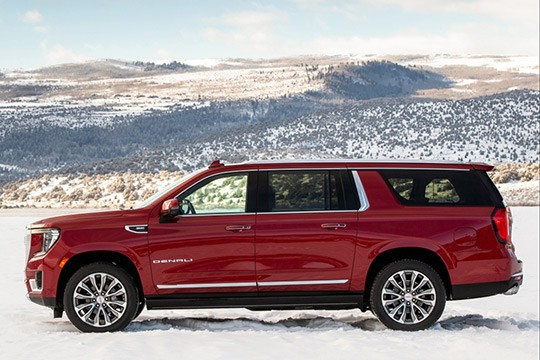A Comprehensive Look At GMC Yukon Body Style Evolution
A Comprehensive Look at GMC Yukon Body Style Evolution
A Comprehensive Look at GMC Yukon Body Style Evolution
Introduction
In this auspicious occasion, we are delighted to delve into the intriguing topic related to A Comprehensive Look at GMC Yukon Body Style Evolution. Let’s weave interesting information and offer fresh perspectives to the readers.
Table of Content

A Comprehensive Look at GMC Yukon Body Style Evolution
The GMC Yukon, a full-size SUV renowned for its rugged capabilities and refined interior, has undergone significant transformations throughout its history. Understanding these changes, particularly in body style, provides insight into the vehicle’s evolution and its ability to adapt to changing consumer demands.
The First Generation (1992-1999):
The GMC Yukon’s debut in 1992 marked the beginning of a legacy. Based on the Chevrolet Tahoe, the first-generation Yukon featured a boxy design with a distinct, upright grille and large, rectangular headlights. This generation introduced the Yukon’s trademark spaciousness and capability, solidifying its position as a reliable and comfortable family hauler.
The Second Generation (2000-2006):
The second generation, launched in 2000, brought a significant design shift. The sharp edges of the previous model gave way to smoother, more aerodynamic curves. The grille, headlights, and taillights were redesigned, reflecting a more modern aesthetic. This generation also saw the introduction of the Yukon Denali, a luxury trim level with enhanced features and a more opulent interior.
The Third Generation (2007-2014):
The third generation, introduced in 2007, continued the evolution of the Yukon’s design language. The body lines became even smoother, with a more sculpted and sophisticated appearance. The grille was redesigned again, featuring a more prominent GMC logo and a more assertive presence. This generation also saw the introduction of a more powerful engine lineup and advanced safety features.
The Fourth Generation (2015-2020):
The fourth generation, launched in 2015, marked a significant departure from previous generations. The design adopted a more modern and refined look, with sharp lines, a bold grille, and LED headlights. The interior was also significantly upgraded, featuring a more luxurious and technologically advanced environment. This generation further emphasized the Yukon’s focus on comfort and capability.
The Fifth Generation (2021-Present):
The fifth generation, launched in 2021, represents the latest evolution of the GMC Yukon. It features a more refined and upscale design, with a larger grille, slimmer headlights, and a more sculpted body. The interior is even more luxurious, with high-quality materials, advanced technology, and a spacious cabin. This generation further reinforces the Yukon’s position as a premium SUV with unparalleled capabilities.
Understanding the Importance of Body Style Changes:
Each generation of the GMC Yukon has reflected the evolving needs and preferences of consumers. The design changes have not only been driven by aesthetic considerations but also by advancements in technology, safety, and performance.
The initial boxy design of the first generation was practical and functional, appealing to those seeking a reliable and spacious SUV. The smoother, more aerodynamic design of later generations reflected a shift towards a more refined and modern aesthetic. The introduction of luxury trim levels like the Denali demonstrated the Yukon’s ability to cater to a more discerning clientele.
The continuous evolution of the Yukon’s body style has been driven by a desire to stay ahead of the curve in a competitive market. Each generation has incorporated new technologies and features, enhancing the vehicle’s safety, performance, and overall appeal.
Frequently Asked Questions:
Q: When did the GMC Yukon get a redesign?
A: The GMC Yukon has undergone redesigns in 2000, 2007, 2015, and 2021, marking the introduction of each new generation.
Q: What years did the GMC Yukon have a boxy design?
A: The GMC Yukon had a boxy design from 1992 to 1999, during its first generation.
Q: When did the GMC Yukon Denali first appear?
A: The GMC Yukon Denali was first introduced in 2000, as part of the second generation.
Q: What are the key design features of the latest generation GMC Yukon?
A: The latest generation GMC Yukon (2021-present) features a larger grille, slimmer headlights, a more sculpted body, a luxurious interior with high-quality materials, advanced technology, and a spacious cabin.
Tips for Identifying Different GMC Yukon Generations:
- Grille: Each generation has a distinct grille design. Pay attention to the size, shape, and placement of the GMC logo.
- Headlights: The shape and style of the headlights have evolved over the years.
- Taillights: The taillights have also undergone significant changes, offering a clear visual distinction between generations.
- Interior: The interior design and features have been updated with each generation. Look for differences in the dashboard, seats, and technology.
Conclusion:
The GMC Yukon has been a mainstay in the SUV market for decades, consistently evolving to meet the changing needs and preferences of consumers. Its body style transformations reflect not only aesthetic trends but also advancements in technology, safety, and performance. From its early boxy design to its current refined and luxurious form, the GMC Yukon has established itself as a capable, comfortable, and stylish SUV, ready to tackle any adventure.







Closure
Thus, we hope this article has provided valuable insights into A Comprehensive Look at GMC Yukon Body Style Evolution. We appreciate your attention to our article. See you in our next article!